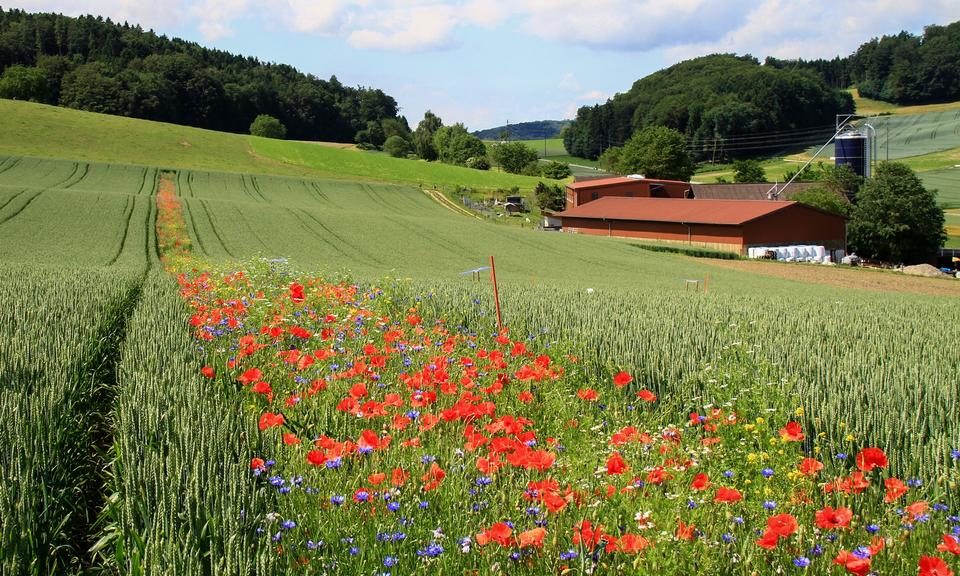
The strips were planted on 15 large arable farms in central and eastern England last autumn and will be monitored for five years, as part of a trial run by the Centre for Ecology and Hydrology (CEH).
Concern over the environmental damage caused by pesticides has grown rapidly in recent years. Using wildflower margins to support insects including hoverflies, parasitic wasps and ground beetles has been shown to slash pest numbers in crops and even increase yields.
But until now wildflower strips were only planted around fields, meaning the natural predators are unable to reach the centre of large crop fields. "If you imagine the size of a [ground beetle], it's a bloody long walk to the middle of a field," said Prof Richard Pywell, at CEH.
Comment: It's a sorry sign that this trial has to run for 5 years when it is already known there is a reduction in the requirement for pesticides.
GPS-guided harvesters can now precisely reap crops, meaning strips of wildflowers planted through crop fields can be avoided and left as refuges all year round. Pywell's initial tests show that planting strips 100m apart means the predators are able to attack aphids and other pests throughout the field. The flowers planted include oxeye daisy, red clover, common knapweed and wild carrot.
In the new field trials, the strips are six metres wide and take up just 2% of the total field area. They will be monitored through a full rotation cycle from winter wheat to oil seed rape to spring barley.
"It's a real acid test - we scientists are having to come up with real practical solutions," said Pywell, who led a landmark study published in 2017 showing that neonicotinoids insecticides damage bee populations, not just individual insects.
In the new trials, the researchers will be looking out for any sign that drawing the wild insects into the centre of fields, and therefore closer to where pesticides are sprayed, does more harm than good.
Similar field trials are also underway in Switzerland, using flowers such as cornflowers, coriander, buckwheat, poppy and dill. Pywell said the hope is that natural predators can keep pests in check from year to year, so there are never major outbreaks: "That would be the ideal - that you never need to spray."
In September, a UK government chief scientific adviser warned that the assumption by regulators around the world that it is safe to use pesticides at industrial scales across landscapes is false. This followed other highly critical reports on pesticides, including research showing most farmers could slash their pesticide use without losses and a UN report that denounced the "myth" that pesticides are necessary to feed the world.
"There is undoubtedly scope to reduce pesticide use - that is a given," said Bill Parker, director of research at the Agriculture and Horticulture Development Board. "There will be probably quite a lot of years when pests are not a problem and pesticide use could be vastly reduced. But there will be some years when a particular pest or disease will be extremely important, and those are the times when you really do need the pesticides."
But he said a "huge cultural shift" was needed in agriculture, where currently pesticides are usually used whether or not pests have been identified. "The majority of crop protection advice given in the UK is from agronomists tied to companies who make their money from selling pesticides," he said. "There is a commercial drive and they will tend to take a prophylactic approach."



Comment: From one study: The necessity of pesticides and herbicides are proving that our mono-cultural, mass production, GMO attempts at cheating nature are not working, and most of these industrial methods are actually hazardous to our health. Eventually we will be forced to return to more traditional, local, smaller agricultural practises - or at least apply the best of them to how we farm in the future: